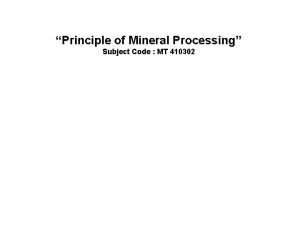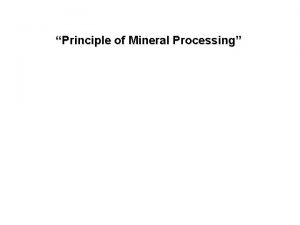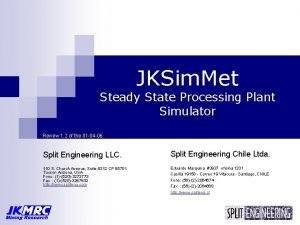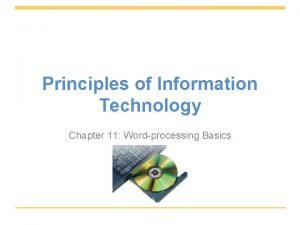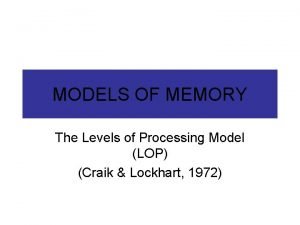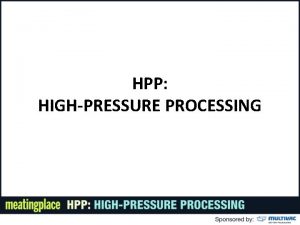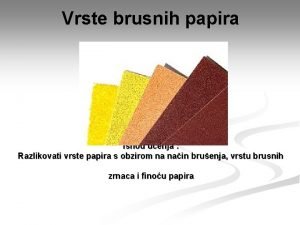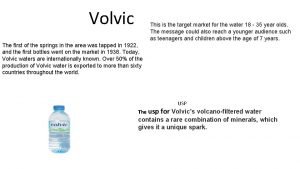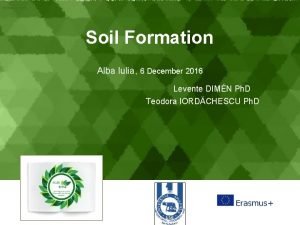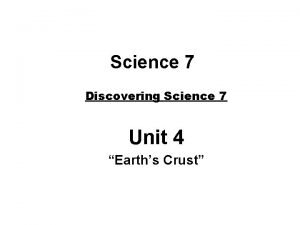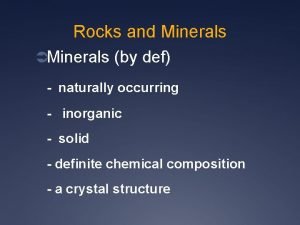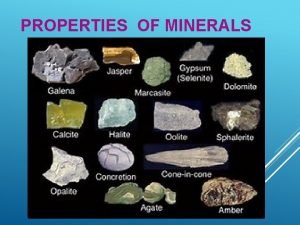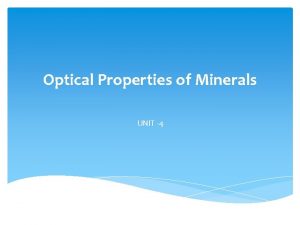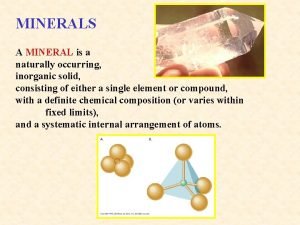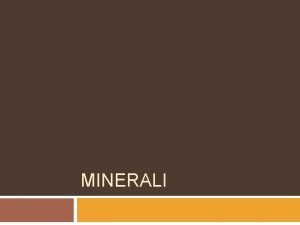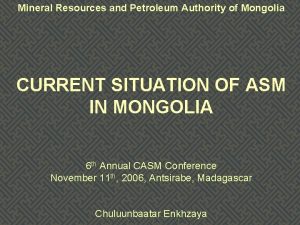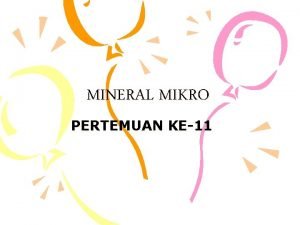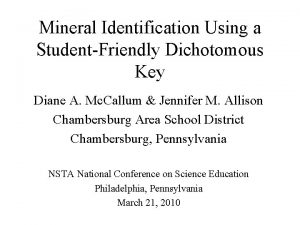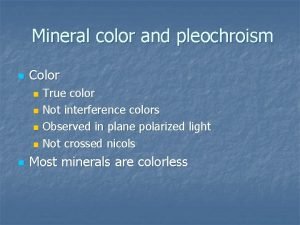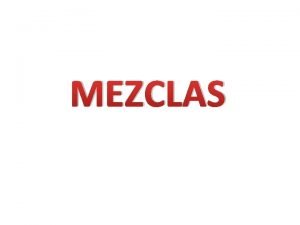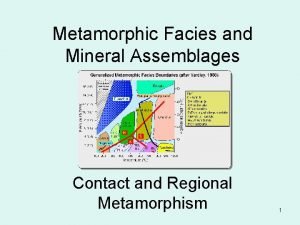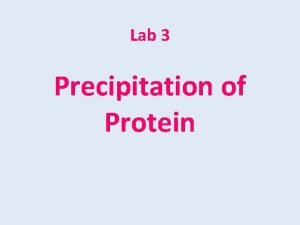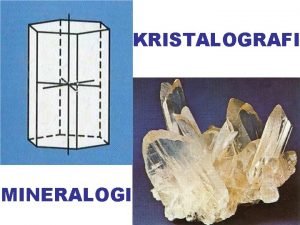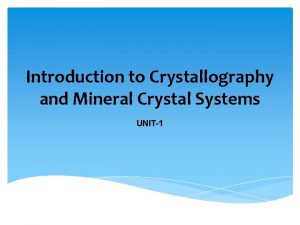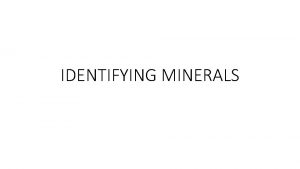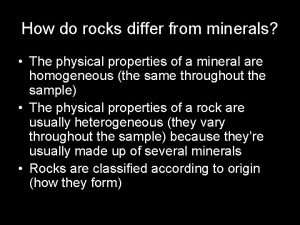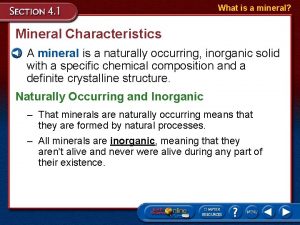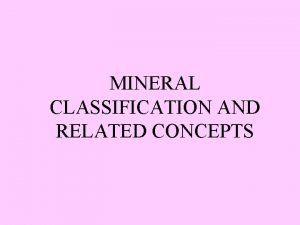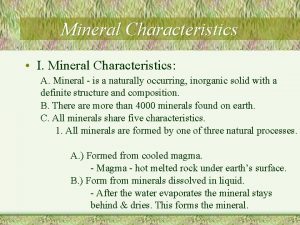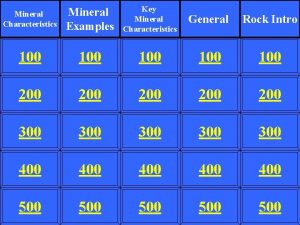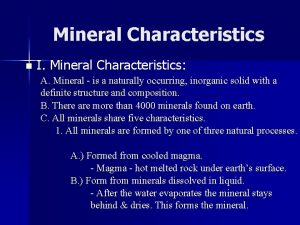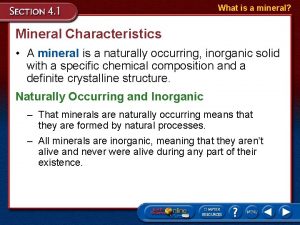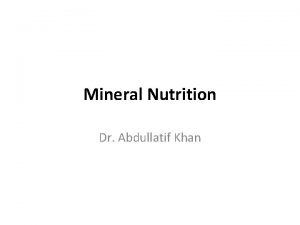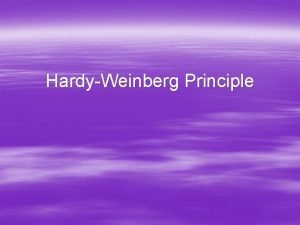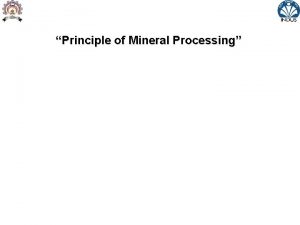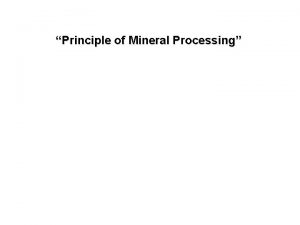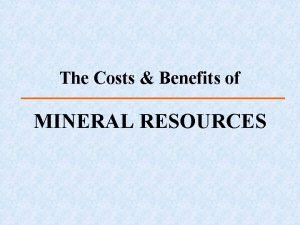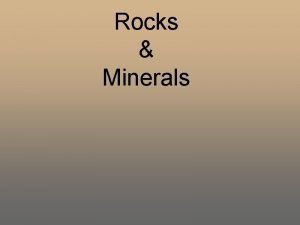Principle of Mineral Processing Principle of Mineral Processing











































- Slides: 43

“Principle of Mineral Processing”

Principle of Mineral Processing - Syllabus Chapter 2 Liberation and its significance, Comminution and sizing, Laws of comminution, Crushing and Grinding- types, equipment, washing, sorting and hand-picking ; Laboratory and industrial screening- equipment, screen efficiency ; Classifier- mechanical and hydraulic, sizing and sorting classifiers, Mill calculation.

Liberation • Concentration of mineral species - other mineral detached by controlled communition • Purpose of sizing - optimum unlocking of desired mineral & grading of product. • Sizing - value , gangue & middlings present • Different hardness / unlocking behaviour of gangue & values - single stage crushing not economical. • Economic liberation mesh size determination by lab test 3

Screen size representation Mesh No – No of openings per inch of screen • Sieve Analysis of Ore Sample : Example Mesh size %wt retained Cummulative % pass +10 7 93 -10 +5 80 13 -5 +1 10 3 -1 3 • Mesh no relation with size of aperture -Tyler (USA) , ASTM , BS standards 60 mesh – 250 micron / 0. 25 mm 100 mesh – 150 micron / 0. 15 mm 4

Screen size representation • Industrial screens – Fixed & Moving Types Fixed Type -Bar screen / Grizzlies ( Large size , with slop , ore /rock ) Cap 10 -50 T/m 2/mm/day -Roll Screens - Bank of rolls , 10 -110 mm , hard material -Punch Screens - MS/SS Abrasive material , 40 mm . 5

Types of Screen Moving Type – Vibrating Screens Cap 50 -200 t/m 2/mm/day Shaking Screen Cap 20 -80 Trommels Cap 3 -20 6

Screen Efficiency Recovery- Undersize after screen / Undersize during lab test Factors • • • Particle shape Size of screen ( mesh size) Relative size of particle & screen size Angle of incidence - min cross section of particle on drop Bunching of small particle due to friction Moisture content Feed spread over screen Rate of feed & thickness of layer Shaking motion of screen . 7

Comminution • Objective – size reduction -Liberation of value from gangue -Handling & Transportation -Preparation for ore processing • Stages of size -Explosive shattering -Primary crushing -Secondary crushing -Coarse Grinding -Fine grinding -Very fine grinding Big size to 1000 mm 1000 to 100 mm 100 to 10 mm 10 to 1 mm 1 to 0. 01 mm 100 to 1 micron 8

9

Comminution Laws • Ore / Mineral irregular compared to crystal behaviour • Factors – Blasting , chemical oxidation in mining , two minerals intercrystallised • Variety of disruptive forces – compression, tension, shear • Energy utilisation for degree of size reduction • Rittinger’s Law Energy for size reduction α Energy of new surface – Net free energy change of state • Kick’s law Energy α log (reduction ratio). e. g 1 cm/mm to 0. 5 cm/mm – Activation energy – volume of fragments 10

Comminution Laws • Bond theory Theoretical net energy for size reduction = Net energy for unit length of crack * total crack length Validation of laws Example : Crushing Sec Crushing Grinding 100 cm to 6 cm 60 mm to 4 mm 4000 to 8 micron Red ratio 24 24 28 As per Kick’s law – energy requirement in 1: 1: 2 ratio but in actual practice -10 -30 times more - small particles with fewer cracks , high probability of escaping being crushed 11

Comminution Laws • Bond theory Theoretical net energy for size reduction = Net energy for unit length of crack * total crack length Validation of laws Example : Crushing Sec Crushing Grinding 100 cm to 6 cm 60 mm to 4 mm 4000 to 8 micron Red ratio 24 24 28 As per Kick’s law – energy requirement in 1: 1: 2 ratio but in actual practice -10 -30 times more - small particles with fewer cracks , high probability of escaping being crushed 12

Crushing Equipment Features : Blake Jaw Crusher 1. Large opening per unit cost 2. Shape of opening for large block shaped feed better than a gyratory. 3. Handling of dirty or sticky feed better, without buildup. 4. Maintenance is easier. 5. Easy dismantling 13

Crushing Equipment Features : 1. High capacity per investment dollar. ( 900 t/h , 1. 2 m – 200 mm gape ) Gyratory Crusher 2. Handles thin, slab-like material better than a jaw crusher. 3. Choked crushing 4. Foundation costs lower than for jaw crusher 6. Easier installation than JC since more compact design and crushing stresses more even. 14

Secondary Crushing Machines Cone Crusher 15

Crushing Capacity Jaw Crusher Volumetric Capacity : Q =B. S. s. Cot(a. kjaw. 60 n) m 3/h Gyratory Crusher Volumetric Capacity ; Q = (D-S)¶. S. s. cot (a. k. 60 n) m 3/h B - inner width of crusher ( m) S - open side setting (m) s - throw ( m) a - angle of nip n - speed of crusher (rpm) kjaw - material constant 1. 5 -2 ( type of material , liner type, feed type) D - diameter of outer head mantle at discharge point KGyra – material constant 2 -3 16

Crushing Equipment -Low reduction ratio ( 3: 1 to 4: 1 ) Roll Crusher -Size of roll proportional to material size -Uniform & small size produced -Nip angle relation with Roll & Particle size & rolls gap -Method of feeding important uniformity -Free & choke feed -Roller Capacity C feed (kg/h) = 188. 5*N*D*W*s*d N = rpm , D =dia of roll (m) , W =roll width ( m) , s = feed density ( kg/m 3), D=distance between roll (m) 17

Nip angle , Roll size , feed size in Crushing 18

Fine Crushing Machines • • • Impact Crushing Mill Hammer Mill 19

20

Grinding • Grinding- finer size – Abrasion & impact Tumbling mill • Batch / Continuous • Dry ( <1% moisture) / Wet Grinding • Open circuit grinding for coarse size • Closed Circuit grinding for fine size • Types of Grinding mill : Shape, Grinding media , Grinding force • Tumbling mill – Cylindro-conical shape • Media – Rods, Balls, Pebbles 21

Types of Tumbling mill • Media – Rods, Balls, Pebbles Ball Mill • Ball mill – Balls of Fe, steel , WC filled in Cylinderical / cylindro-conical vessel -Load < 40% filling of vessel in Dry • Rod mill – rods 75 -100 mm dia -Length /diameter ratio >1. 4 -more wear than ball mill -Coarser particles crushed -Selective grinding – low fines • Autogenous mill Rod mill 22

Theory – Ball Mill 23

Theory – Ball Mill mv 2/R a mg • mg Cos a = m. V 2/R Centripetal force = Centrifugal force m=mass of ball ( kg) , N – rev/min of mill V – linear vel of ball m/sec G –gravitational acceleration V = 2 pi R N /60 Cos a = 4 (pi)2 N 2 R / 60*60*g = 0. 0011 N 2 R Consider d as dia of ball & D as Ball mill dia , effective radius of outer most path will be (D-d)/2 Cos a = 0. 0011 N 2 (D-d)/2 Critical speed occurs at angle a =0 , Nc = 42. 3/ (D-d)0. 5 rev/min 24

Theory – Ball Mill • % loading = 113 -126*H/D , H Unfilled gap , D inner dia • Speed of mill always 75% of critical rotation Nc ( rpm) • No grinding – Load centrifuges • Heavier lumps close to shell • Lighter grains – move forward 25

Ball Mill Operation Factors : • Selection of Grinding media size -Increase in size – larger particle break due to pressure -Decrease in size – more surface area – higher grinding capacity • Speed of mill – high without centrifuging the charge – fall of material favourable • Solid-Liquid Ratio – Coating of material on grinding media – 70: 30 to 80: 20 for Ball mill • Recirculating load – 5: 1 ( feed / return ) , presence of fine slime, clay 26

BALL MILL WITH – GRATE-DISCHARGE AEROFALL MILL 27

Classification • Particles of various sizes , shapes & sp. gravities separated by different rate of travel through fluid –water/air • Heavy , coarser, rounder grains settle faster than lighter , angular & finer • Particles fall – under vertically acting hydraulic force of rising fluid ( water /air) – frictional drag & collision • Fall of particle – Packing density ( particle no / pulp vol) around its movement • Due to frictional retardation , Coarse material clasiification difficult – application range 1 mm to 50 microns 28

Classification • Movement of solids in fluid under two conditions -Free Settling – falling of particle freely in still water / upward current without interference of other particle ( settling tanks , thickener , classifiers) - Hindered Settling – falling in crowded mass – low falling velocity ( Jigs , Heavy media separators ) Settling Tanks 29

Classification • Classification under - Hindered Settling Conditions ( fluid with 40 -70% solids ) - Free Settling Conditions ( Fluid with 3 -35% solids ) • Condition for classification based on SORTING or SIZING • Hindered settling condition ( 40 -70% solid) for sorting – product subjected to tabling due to large difference in sp gravities of minerals • Classifier as sizing device – Free settling condition – dilute suspension ( 3 -4 % solid) used – minimum effect of density difference 30

Sorting Classifiers • Hindred settling , Coarse particles , Sp Gravity & Shape of the particles • Launder type, Cylinderical , Trapezoidal tank classifiers , Hydrotator classifiers ( coal cleaning by water ) • Very little use Launder type classifiers Gravity classification 31

Sizing Classifiers – Non Mechancial • Surface classifier- fine material at the water surface – Thickeners , Pyramidal box type classifier ( Spitzkasten) Thickener Spitzkasten 32

Sizing Classifiers – Non Mechancial • Hydraulic Classifier ( upward current ) for Coarse material ( >180 microns) -Shape : cylinderical / tapering - Water rise at controlled rate in upward direction & feed from the top - Lighter grains overflow to second compartment with lower water velocity 33

Sizing Classifiers – Mechancial • Shape – Rectangular or bowl shaped inclined settling tank • Pulp ( density 30% ) fed in such condition : - Coarse particle flow downward freely - Lighter ones discharge through weir / overflow • Stirring by – Drag belts / Set of rakes / Spiral screw Rake classifier Bowl classifier 34

Spiral Classifier 35

Sizing Classifiers – Mechancial • Spiral Classifiers – sloping trough ( 25 -35 cm/m) as in rake classifier , stirring by helix / spiral ribbons ( 3 -20 rpm) , material moved from bottom of the tank • Multizone classifier - two settling zones ( one for hindered settling near rake and other for free settling ) • Overdrain classifiers – Long sloping trough , drag belt with scrapper - heavier particles in the bottom driven up slope 36

Sizing Classifiers – Mechancial • Settling velocity 100 times more in air than water • Pneumatic classifier –Two annular conical shells , air as medium , vanes in outer shell – coarse / heavier particles descend via inner shell – Hardinge & Gayco models • Cyclones ( Centrifugal Classifiers) -Very fine particles require more time to settle - surface drag force neutralization by gravitational force -Increase in gravitational pull due to Centrifugal force 37

Sizing Classifiers Hydro/ Pneumatic cyclone : spinning motion imparted to suspension by water / air. Air Cyclones - Frictional drag of air / particle touching the wall - pronounced 38

Cyclone Classifiers • Vortex finder – zone of low pressure & centrifugal force • Fine particles tend to move towards vortex finder • VF adjusted to minimise short circuiting of new pulp by reducing cross section of cyclone – VF on conical portion • Particle subjected to centrifugal force mv²/R ( V –tangential velocity) and drag force by inward flow of fluid • Each particle with particular radial path balancing the forces • If radial path of particle < vortex – particles carried to vortex stream as overflow 39

Cyclone Classifiers • If Radial path > vortex , particles large & dense at the wall of cone – fall to apex of cyclone • Cyclone suited to dilute pulp ( 80% solid in underflow ) • Factors affecting operation Particle dia ( 5 -150 microns) , Rate of feed , Cone angle Solid –liquid ratio , Position of vortex finder , Apex & vortex finder diameters , Sp gravity of particle , Feed pressure diameter of overflow pipe , length of cone 40

Cyclone Classifiers • Advantages over other classifiers : -Less floor area , cheaper equipment , less power consumption , low maintenance , operational ease -Most suitable for fines -Smooth out surges , robust in structure , low wear , easy control -Capital cost less, High settling rate due to CF force , Higher circulating load • Demerits : Wear & tear on feed pipe , not suitable for particle < 5 micron 41

• Classifiers Capacity : • It is proportional to a) cross sectional area b) rising velocity of fluid ( water /air) c) solid content in the fluid C ( t/h)= a. AvΩd a = constant = 1. 875 A = cross sectional area ( ft 2) v = velocity of fluid (ft/ min ) Ω = % of solids by volume d = Sp. Gr. of solids ( t/m 3) C = tons of solids /hr 42

• Classifiers Efficiency : -Difficult to quantify , Distribution of product in overflow & underflow with respect to feed -It is the ratio , on % basis , classified material in the overflow / classifiable material in the feed -Normal range 50 -80% -Hinderance for high efficiency – flocculation of pulp • Cost of classification – 300 mesh require 4 times settling space for classification of 150 mesh & 12 times compared to 65 mesh 43
 2 product formula mineral processing
2 product formula mineral processing Rake classifier working principle
Rake classifier working principle Jksim
Jksim Top down procesing
Top down procesing Gloria suarez
Gloria suarez Bottom up processing example
Bottom up processing example Neighborhood processing in image processing
Neighborhood processing in image processing Primary food processing examples
Primary food processing examples Fractal image
Fractal image Histogram processing in digital image processing
Histogram processing in digital image processing Parallel processing vs concurrent processing
Parallel processing vs concurrent processing Laplacian filter
Laplacian filter Point processing in image processing
Point processing in image processing Gonzalez
Gonzalez Bottom up.processing
Bottom up.processing Interactive processing
Interactive processing Principle of word processing
Principle of word processing Levels of processing model
Levels of processing model Principle of high pressure processing
Principle of high pressure processing Tvrdi mineral za brušenje
Tvrdi mineral za brušenje Who are the target market for bottled water
Who are the target market for bottled water Showeet com
Showeet com Discovering science 7
Discovering science 7 Naturally occurring mineral
Naturally occurring mineral Properties of mineral
Properties of mineral Resemisasi
Resemisasi Prismatic cleavage
Prismatic cleavage Veins are often formed from hot water solutions
Veins are often formed from hot water solutions Mineral vs element
Mineral vs element Svinčevo siv mineral
Svinčevo siv mineral Minerals found in karnataka
Minerals found in karnataka Mineral resources and petroleum authority of mongolia
Mineral resources and petroleum authority of mongolia Mineral mikro
Mineral mikro Mineral mikro
Mineral mikro Mineral identification dichotomous key
Mineral identification dichotomous key True color of mineral?
True color of mineral? El agua mineral es disoluciones coloides o suspensiones
El agua mineral es disoluciones coloides o suspensiones Mineral assemblage
Mineral assemblage Imágenes de origen inorgánico o mineral
Imágenes de origen inorgánico o mineral Precipitation of proteins by strong mineral acids
Precipitation of proteins by strong mineral acids Contoh mineral monoklin
Contoh mineral monoklin Pedion crystal form
Pedion crystal form What is the luster of this mineral
What is the luster of this mineral What is gypsum
What is gypsum
